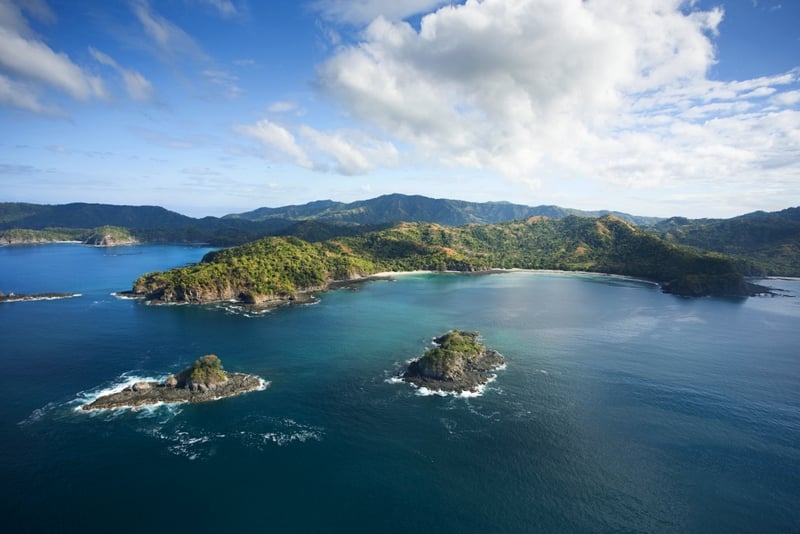
Costa Rica is a world-renowned vacation destination known for its pure way of life and truly memorable experiences, from adventures like volcano trekking and offshore diving to more relaxed options like sunset strolls, cultural events, and truly unique cuisine.
In this ebook, we've compiled a guide to making the most of Costa Rica, with tips, advice, and suggestions taken directly from the people who know it best -- the locals!
Food in Costa Rica can be an expression of culture, a personal experience, and an exciting adventure.
Dining in the country presents visitors with an opportunity to experience the character of Costa Rica, sampling the flavors of the rainforests and tropical seas and connecting with recipes and cooking techniques that trace their roots back for generations.
Costa Rica has long been a place where indigenous cultures blend with colonial influences to create a fusion of old and new worlds. Nowhere is that more evident than in the local cuisine.
For a country that’s under 20 thousand square miles in total, Costa Rica is home to an incredible variety of plants and animals (in fact, 6% of the world’s biodiversity can be found within the nation’s borders ). These ecosystems, and their wealth of natural ingredients, inspire the food traditions of every region in the country — much to the delight of the culinary-minded traveler.
From the dry forests of the northwest to the Caribbean coast, these locally sourced ingredients combine with rich and colorful traditions to inspire a selection of culinary experiences that will excite all your senses. Here’s a sample of what Costa Rica has to offer:
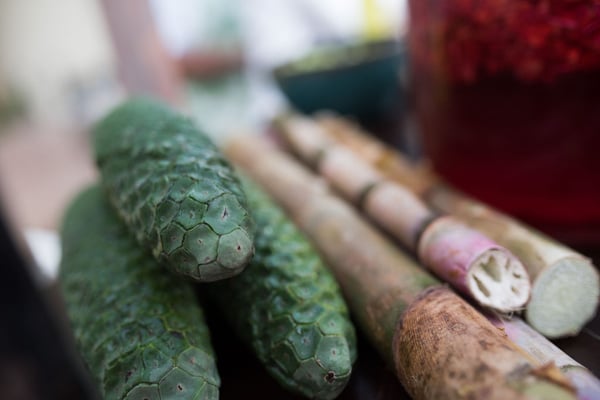
If you’re looking for fresh, local ingredients brought to life in an unmistakably Costa Rican style, look no further than the Ferias, farmer’s markets that take place throughout the week all across Costa Rica. Featuring fresh products from the region’s farmers in tandem with other small shops and stands, these Ferias are lively community community gatherings, and double as a buffet of some of the country’s best local, handmade options.
The menu, like the ingredients around Costa Rica, is seasonal and constantly changing. Fresh fruits & vegetables are the star, with organic poultry, eggs, fresh fish & seafood rounding out the key ingredients for the handmade meals whipped up on the site, with vegan options available and dozens of handmade sauces. Don’t forget the naturally dried herbs & spices, fresh baked French pastries and gluten free baked goods, homemade cookies & ice cream, jams and jellies, honey, cacao nibs & fresh chocolate products, and even locally made Kombucha, which all help round out the meal.
Costa Rica has coastline on two bodies of water -- the Caribbean Sea and Pacific Ocean -- and unsurprisingly seafood is an essential part of the national cuisine.
One of the best places to get fresh quality fish is on the northwest coast of the country, and with exclusive access to local fishermen, you’ll be hard pressed to find fresher, more flavorful seafood than at Sentido Norte.
Few places do dock-to-table seafood quite like Sentido Norte, a fine dining bistro at Las Catalinas. This restaurant was founded by Chef Jose Lopez, a local who skillfully — and sustainably — brings his generations-old family recipes to life for dining guests.
He has designed a unique menu that draws from his country’s culinary identity, using indigenous ingredients and touching on European, African, and Mesoamerican influences. All this is served in a remarkable open air venue on a hilltop overlooking the beach, the ideal location to bring out the welcoming and natural sophistication of Chef Jose’s dishes. We recommend a sunset visit, where the atmosphere in the restaurant is second to none.
Costa Rica is a land of stories and adventures, filled with a diverse range of interesting climates and people, and there's no place that captures the coming together of all of these elements than Ponciana Restaurant, the culinary gem of the Santarena Hotel.
Ponciana was created in a vision of excellent Costa Rican gastronomy, to be a place of delicious food and delightful atmosphere in a special town. Head Chef Saul Umaña came to Santarena after years of experience in Basque Country with a renewed vigor to drive his home country's cuisine forward. Drawing from the successes of Basque cuisine, and inspired by the atmosphere of the great coastal towns like Biarritz, Ponciana was born, a uniquely local offering drawing from the international character of Chef Umaña's experience as well as that of Santarena and the town Las Catalinas.
Ponciana sources its unique Costa Rican dishes from ingredients found in the seas of the Pacific, in the mountains of the central country, and from farms all around the region. Built to be a place where people gather to exchange stories as they eat, drink, and socialize, this restaurant is a traveler's haven, punctuated by colorful, creative dishes with truly unique flavors.
Of course, no gastronomic trip would be complete without some local homestyle cooking. Pura vida means a lot of things, they are all captured in a welcoming family-cooked meal.
In the heart of the country’s capital, San José, Soda Tapia serves up a Tico favorite: sandwiches served on rolls made with masa and stuffed with local meats and other goodies. Known locally as arreglados, these sandwiches are notable for their signature fresh cheeses, which are a fundamental part of the homestyle morsel.
Soda Tapia is located in next to La Sabana Park, where this family owned spot has been cooking up arreglados for more than 120 years. Soda Tapia is also a great spot to pick up some gallo pinto, which is a delightful and hearty local classic.
.jpg?width=600&name=Personal_Chef%20(1).jpg)
If you find yourself in Las Catalinas, there’s no better way to engage with the unique cuisine of the area than with Bahía Group, whose team of personal chefs bring their love of Costa Rican ingredients and international culinary experience to the forefront with seasonal menus sourced from the area and dedicated to their preservation.
The group is headed by Chef Gilberto Briceño, who came to town after the wild success of Vestigio Creativo, his series of one-shot restaurants with unique menus based on foraged ingredients from around the country. At the moment, Bahía offers two current options for visitors staying in town: a Beach Barbecue menu, featuring flame-grilled, charcoal smoked, and fire-baked options right out on the beach, and an In-House Dining menu, complete with wine pairings, seasonal specials, and a selection of fresh ingredients delicately and carefully prepared for a truly enjoyable experience.
The real star of these experiences are the Chefs, who bring to the table their creative edge, effervescent personalities, and love for the local culinary tradition. Each course comes with a story, and the chefs’ knowledge of their food and excitement for their craft is contagious as they weave education and entertainment into the meal.

You won’t have to look far for a cup of world-class coffee in Costa Rica. Cafe is a point of national pride here, and no matter where you are you’re never far from an excellent brew. In fact, only arabica coffee can be legally grown in the country, with lower quality robusta strictly forbidden by law.
For coffee lovers on the hunt for the best, look no further than your nearest coffee seller or market. Local roasters can offer you a taste of the top local varietals, all expertly roasted, ground, and prepared to delight your senses. No matter where you go in Costa Rica, there’s a hot cup waiting for you.
Where will your culinary adventure take you?
Experiential activities are meant to immerse travelers in the local culture, giving them a personal understanding of what makes a destination unique. A progressive approach to tourism, the key principles of experiential travel include authenticity, sustainability, and activity — all with a strong local focus.
Above all, experiential travel is meant to be transformative, both for the traveler and the new friends they make, and Costa Rica offers these opportunities across the country.
Costa Rica isn’t just a place where you lay out on the beach (although that is a pretty good way to spend an afternoon). What helps set this small nation apart are the immersive activities readily available for travelers looking to get under the surface and experience what the country is all about. Visitors to Costa Rica aren’t isolated from the people who make this country special, and that’s intentional.
For the most part, locals are friendly, happy to help teach a little bit of Spanish, and willing to share the good times with tourists. In addition, ticos (as Costa Ricans call themselves) pride themselves on a warm, welcoming, and fun loving culture, one that inspires people to focus on the good life.
Want to connect with the real Costa Rica? Here’s a few suggestions:
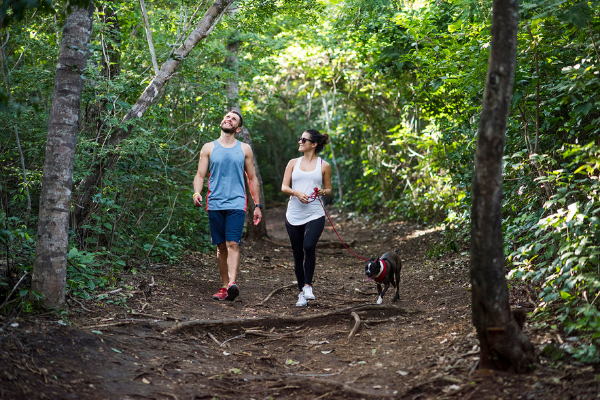
The vibrant ecosystems in Costa Rica are among the foremost in the world. Six percent of the world’s total biodiversity can be found in the country, a tremendous number for a country which occupies only .03% of the world’s landmass.
With that said, it’s not surprising that environmental tourism is available right at your doorstep almost anywhere in the country, giving you the opportunity to meet howler monkeys, three-toed sloths, scarlet macaws, and more.
Local is the way to go here -- hiking and trekking with skilled guides from the area helps connect you with the natural world in a way that has minimal impact on the local ecosystem and maximum impact on your perspective of the world.
Costa Rica is also home to 28 national parks, three of which are UNESCO World Heritage Sites. Popular parks to visit in the northwest of the country include Parque Nacional Volcán Tenorio, which is home to a diverse habitat of wild animals just a short trip from the coast of Guanacaste, and Rincon de la Vieja National Park, where you can wind your way through the towering treetop canopies or trek up a volcano for breathtaking views.
On the coast, Las Catalinas has miles of well maintained trails to hike (or mountain bike for the more adventurous), offering the opportunity to explore expansive hillside vistas and panoramic ocean views as well as tropical wildlife and foliage.
The local marketplace is the center gathering point of communities the world over. It’s no different in Costa Rica, where mercados are congregation areas for locals looking to shop for their families as part of daily life.
For travelers, markets in Costa Rica are a great place to explore local foods in depth, shop for regionally produced goods, and chat with the merchants. It’s also a great place to pick something up to take home -- after all, finding a handcrafted artisan keepsake in a mercado beats something you pick up from the airport every time.
Real is the key word here. When you go outside to grab a bite or shop for souvenirs, you aren’t walking into a theme park — you’re right in the middle of it, alongside local residents going about their lives.
.jpg?width=600&name=MIxologist%20(1).jpg)
The opportunity to learn something about themselves and others is what brings a lot of people to experiential travel. Many travelers don’t want to see a community from a tour bus, they want to get involved. One way to bring your learning to life is to learn from the locals, through cooking classes, artisan workshops, and more.
Take Las Catalinas, on the coast of Guanacaste. One of the best parts of being in the town is getting to learn from the other members of the Las Catalinas community, who hail from all around the world and are very likely to share with visitors.

Maybe you’ll meet with town architect Sara and lead barista Danny as they explore Costa Rican coffee and the industrial design of the industry. Or maybe you’ll sit in with Ponciana’s head mixologist as they explore Costa Rica’s biodiversity and how it has left the town with twists/dashes found nowhere else in the world. Offshore you might have an ocean safari day with Ernst Van Der Poll of ConnectOcean, with a guided snorkel, SUP, or dive followed by a beach clean up and BBQ at Dantita beach.
No matter what you pick from the dozens of options in town, you’re bound to leave having learned something new to take home!
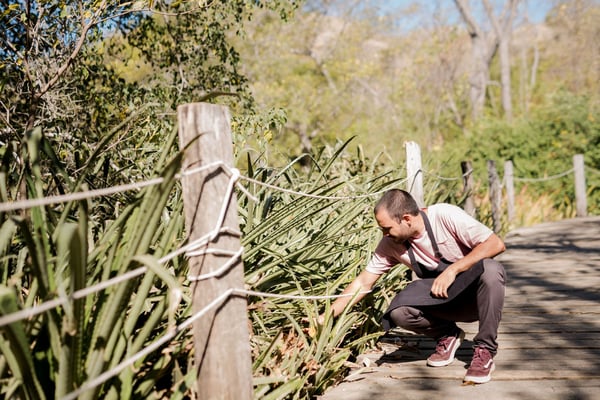
Drawing from an immense biodiversity and a rich cultural history, the dining scene in Costa Rica shouldn’t be missed. After all, food is an important part of culture, and no immersive experience in Costa Rica will be complete without some excellent regional cuisine.
Each region in Costa Rica has its own local culinary style. However, what connects all of them is the importance of fresh ingredients — which, thanks to the proximity to the source, aren’t hard to come by. Especially for lovers of seafood and organic produce, Costa Rica is a culinary destination that’s hard to match.
Take for example the Pop-Up Restaurants in Las Catalinas, a new town tradition started by Chef Gilberto Briceño. Drawing from his love of Costa Rican ingredients and his international culinary experience, Gilberto came to town after the wild success of Vestigio Creativo, a series of one-shot restaurants with unique menus based on foraged ingredients from around the country.
Now, Briceño brings his creative edge, effervescent personality, and love for local ingredients to the culinary scene of the new beach town with frequent Pop Ups. Each with a unique, one time menu themed around exploring different culinary trends -- ranging from microgreens to foraged fruit to pre-colonial traditions to international influences -- these Pop Ups are served directly by Briceño and his team, whose knowledge of their food and excitement for their craft is contagious as they weave story and education into the meal. It’s definitely an experience worth having while you’re in the country.
Pura vida is the Costa Rican national motto, meaning “pure life”. It’s a versatile phrase, which can be a greeting or a farewell, a description of how your day’s going, a way to move past little inconveniences, and has many more uses.
It’s also an essential call to action for outsiders who may not understand how important peaceful moments, easygoing hospitality, and “the good life” is to ticos. What this means is that any experiential travel itinerary that is busy, chaotic, or stressful is really missing the most important element -- connecting with the way another group of people lives. With any travel to Costa Rica, pura vida should be your essential starting point, no matter what activity you choose.
Of course, that doesn’t mean laying around doing nothing. Costa Rican culture has a strong thrill seeking tradition, especially out among the natural world. Sea kayaking, surfing, paddle boarding, and mountain biking are all parts of life around here, so feel make sure to dive in and live it up among all that Costa Rica has to offer.
Looking around an average Costa Rican neighborhood, you’ll notice the country looks different from its fellow Central American nations. In fact, within each region and even within a few city blocks it’s possible to see a range of styles that traverse time and architectural traditions.
For example, one street in a neighborhood like Barrio Amón may feature neoclassical buildings right next to vibrantly painted Victorian homes, both across from an art deco restaurant.
As a whole the major cities in Costa Rica have a distinctive style that reflects the history and culture of the region, with enough variety and history scattered into each to delight and inspire architecture enthusiasts in Costa Rica. Here are some of our favorites:
Nearly all Costa Rican towns and cities were at one time dominated by the Spanish colonial architecture you can find throughout Mexico and Central America. This exquisite Spanish rococo style known as Churrigueresque (named after Madrileño architect José Benito Churriguera) fuses strong lines with flamboyant ornamentation. Today, only a few examples remain, but the ones that do are striking.
Strong examples of this architectural tradition remain standing in cities like Liberia. Located in Guanacaste province in Northwest Costa Rica, Liberia is a city with deep traditional roots that is largely untouched by mass tourism and urbanism. Architecturally, that’s illustrated by gleaming whitewashed buildings, old white gravel streets, and welcoming colonial squares, part of why the city is called “La Ciudad Blanca” or “The White City”. Here, Calle Real is the perhaps the best avenue for viewing historic buildings.
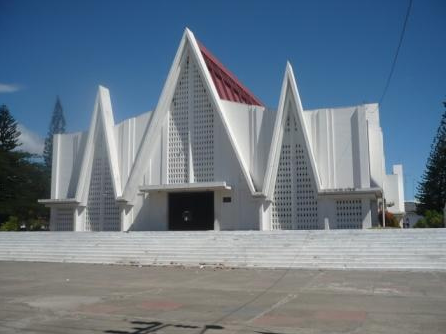
Intermixed with this traditional style and culture are contemporary avant-garde buildings, including the fortress-like brutalist Comandancia de Plaza and the distinctly modern La Iglesia de la Inmaculada Concepción de María.
Visitors to the Guanacaste region will fly into Liberia airport, which presents an excellent opportunity for architecture enthusiasts to take a few hours to check out the distinctive architecture. Our favorite suggestion is to stop by La Casa de Calá to grab lunch -- located on Calle 2 and Central Ave, the restaurant is located in an old converted home, and you can see the traditional walls exposing the typical construction methods of traditional Bahareque construction.
The Costa Rican capital of San José is defined by a very modern architectural style. Much of the historic building stock has been replaced with high rise buildings similar to other modern global capitals, and many of these buildings, such as Torre De Usos Mixtos EN, are considered architecturally significant.
That’s not to say there’s no historic architecture tradition in San José. In Barrio Amón you’ll find the highest concentration of colonial buildings in the city, plus a collection of large stately manor houses built by wealthy cafetaleros — coffee plantation owners — in the late 19th century.
This vibrant and colorful neighborhood is walking distance from Castillo Azul, a building that combines neoclassical and mediterranean inspiration and serves as one of the more iconic and historically significant structures in Costa Rica.
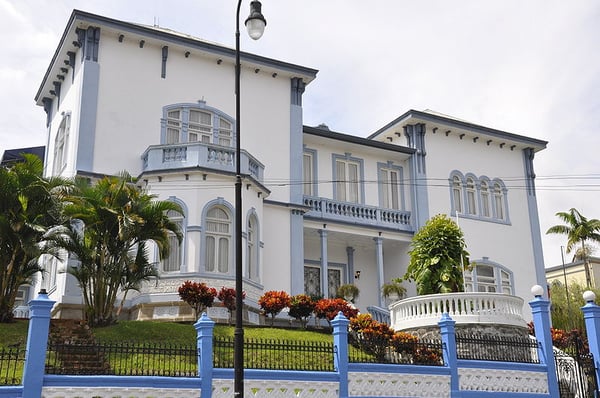
Situated in la Plaza Cultura, the Teatro Nacional is another of Costa Rica’s most revered buildings. Built off of the success of the country’s coffee exports, this was an important landmark to Costa Rica’s development just 60 years after it became a sovereign nation. Designed with striking neoclassical columns at the end of the 19th century, this theater features beautiful and elaborate marble work that is a must see.
There’s also a few interesting architectural landmarks that don’t lend themselves to any specific eras, adding to the eclectic nature of the town. One particularly striking element of the San Jose skyline is La Escuela Metálica, or “Metal School”, which was manufactured in Belgium and given to the city in the late 19th century during the nation’s educational revolution.
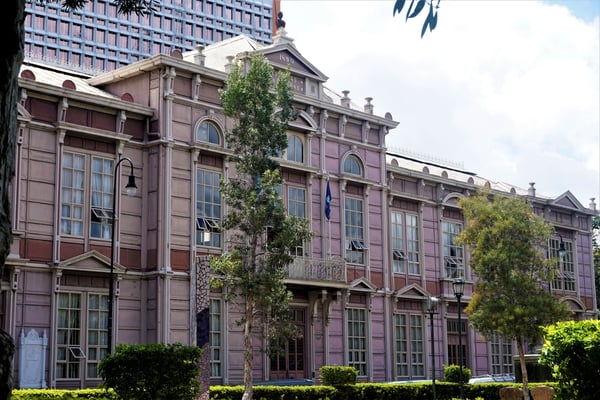
Another distinct area of town is Barrio Escalante, an art-revival area stitched together from the constant creation and renovations of the city, sporting architecture stretching back to Coffee Haciendas, and tracing a timeline through modernism and into the postmodern era. There’s perhaps no better place to see the collision of architectural styles into a streetside mosaic than here, and the area is definitely worth a visit if you’re in town.
The original Costa Rican capital Cartago is one of the oldest existing communities in the country. It’s a rare hub for historic buildings, despite being almost completely destroyed by a volcanic eruption in 1723.
Cartago is home to the Basílica de Nuestra Señora de Los Ángeles, a classic Byzantine style Roman Catholic church built in 1639 and restored in the early 20th century. One of the biggest architectural draws of the city, it’s also Costa Rica’s most venerated religious shrine and a major pilgrimage site in the region.
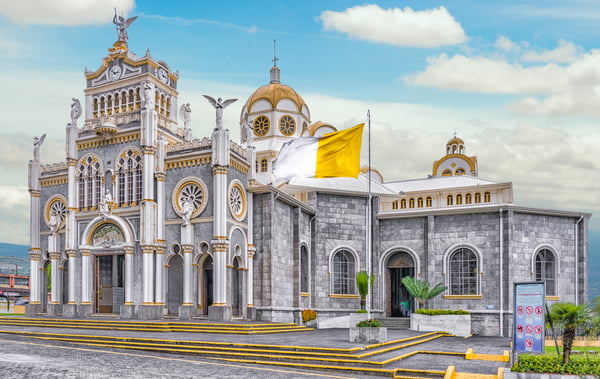
Not far from the Basílica is the site of another historic church: Las Ruinas de la Parroquia. Also known as Las Ruinas, or the ruins, this site is home to a 19th century Romanesque church that was partially completed, then destroyed by an earthquake, only to be partially completed and destroyed by an earthquake again! Only some walls and staircases remain today, but it’s still one of the biggest historic draws in the city.
For Meso-American history buffs, Cartago is one of the last cities on the way to Guayabo, a pre-Columbian ruin that, while less dramatic than many other Central American ruins, is no less essential to Costa Rican history. The area was inhabited for more than two millennia starting in 1000 BC, before being suddenly abandoned in 1400 AD for reasons that remain a mystery. The area is significant for the ancient residents’ use of round rock platforms as the base of old wooden structures, which were surrounded by ponds and aqueducts that are an example of early civil engineering.
In all, an excellent place to reconnect with some of Costa Rica’s oldest history.
One of the newest towns in Costa Rica, Las Catalinas is a striking example of New Urbanism, a walkable beach town that integrates beauty both natural and manmade into the course of everyday life.
Visually, Las Catalinas is inspired by examples of timeless tropical architecture in Costa Rica, Nicaragua and Panama. The town seeks to design buildings that build upon both lost and living examples of Costa Rican traditions, constructed to be ideal for the town’s coastal tropical environment and last centuries.
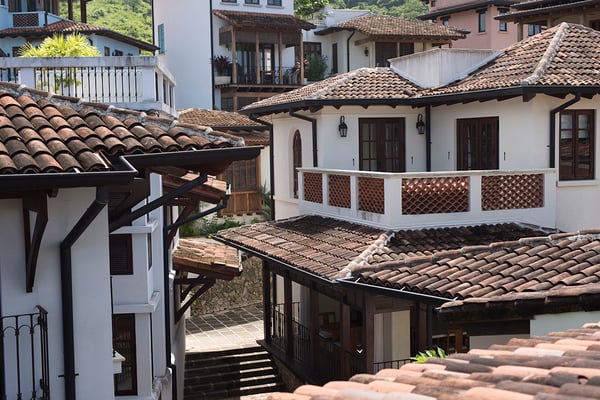
The urban designers for the town pulled from elements of French, Spanish, Colombian, Nicaraguan, and Costa Rican precedents -- if you enjoy towns like Cinque Terre, Andalucia, and Eze, San Sebastian, Cartagena, and Seaside, you will find echoes of familiar elements here, evolved to something entirely new.
In Las Catalinas, access through the community on foot — walkability, as New Urbanists call it — puts people face-to-face with one another in a way that car-centric communities don’t. Las Catalinas is a car-free environment where people walk from their villa to the market and down to the beach. It’s no surprise that a number of people are making the move and living in Las Catalinas full time.
.jpg?width=600&name=Top%209%20Unique%20Experiences%20for%20Costa%20Rica%20First-timers%20(1).jpg)
The world is full of beautiful countries and tropical nations with options to kick back and unwind. So what makes Costa Rica unique? From the local ecology to the lively and friendly culture, let's take a look at a small taste of what there is to discover in this small Central American country.
Six percent of the biodiversity on Earth resides in Costa Rica — a country that’s roughly the size of West Virginia or Croatia. And what sets this small country apart from some of the other biodiverse nations in the Americas is that you can access the natural world pretty easily.
For example, cloud forests make up only 1% of the world’s woodlands, a beautiful rarity home to a breathtaking array of plants, birds, primates, and other animals that live nowhere else in the world. In Costa Rica, you can experience this microclimate firsthand without river boat, safari jeep, or a long wilderness trek.
Visitors to Costa Rica can drive to Monteverde Cloud Forest from the International Airport in Liberia in less than 2.5 hours. Imagine hiking through rainforest canopies with three-toed sloths in the morning, and then getting back to your hotel in time for poolside cocktails in the evening. In Costa Rica, that's just a normal day.
In many instances, local communities are just a short walk from ecosystems bursting with life, complete with howler monkeys, capuchins, exotic birds, and more.
The Nicoya Peninsula is home to two essential nesting grounds for endangered sea turtles. From October to March, migratory oceanic turtles come from throughout the Pacific to make their nests on Playa Grande, just north of Tamarindo and about 45 min from Las Catalinas. This event, called arribadas in Spanish, see the arrival of hundreds of thousands of sea turtles like the leatherback sea turtle and the hawksbill sea turtle.
More importantly, you can witness this incredible event in a conscious way that actually helps protect sea turtle habitats. Park fees and donations to Las Baulas National Marine Park, where the sea turtles make their temporary homes, go directly toward their conservation efforts.
Chance are you've had coffee and cocoa, but have you tried them fresh, directly from the source? If not, they're definitely worth a try, and Costa Rica is home to many of the world’s finest producers of coffee and chocolate. It's almost unfair -- thanks to proximity to the source, the products you find at local farmer’s markets around will be just as fresh, rich, and complex as almost any in the world.
The Diría Coffee Tour in Guanacaste is a great way to go in-depth with one of the world's favorite drinks. Visitors to the farm follow the path that coffee takes from growth through to processing and eventually into recycling and composting, ending the trip with a taste of the local coffee and snacks. The Diría plantation is also particularly unique due to its location -- in a region with traditionally poor coffee-growing conditions due to weather and type of soil, the microclimate around Diría provides ideal growing conditions and, as visitors will be sure to learn, a unique set of flavors.
Cocos Island is situated 350 miles to the west of Costa Rica. For decades, it’s been a destination for explorers in search of both treasure and adventure. Most of the treasure around the area has been found, but the adventure still remains, including some of the world's premier reefs. Traditionally accessed via a live-aboard dive boat, Cocos Island offers remarkable options for the more experienced diver. Visitors get the chance to explore undisturbed reefs near the shore, as well as some spectacular deep water diving in one of Cocos’s main attractions -- scuba diving with hammerhead sharks.
Much closer to the mainland, there’s excellent opportunities for diving at the Las Catalinas Islands, just a 30 minute boat ride offshore and accessible to divers of all experience levels. The premier offering in Guanacaste is with ConnectOcean, who have partnered up with local fishermen and guides to offer visitors a number of unique diving and snorkeling excursions. And if you're staying in Las Catalinas, there are a number of spots to explore right from the shore, like rock reef at the north end of Playa Dantita, the leeward coast by Punta Penca, or out on the shore side of the Islotes Pitahayas. Each offer a lively assortment of reef fish, rays, and underwater diversity that can hold a candle to most beaches in the world.
Much of Costa Rica's natural wealth usually considered to be in its coastlines, its forests, and its mountains, but there's also a whole world to explore underground. For spelunking enthusiasts, Costa Rica offers some unique opportunities to go deep underground and find that life doesn't stop at the surface.
One example is the Barra Honda Caves, located in Barra Honda National Park just outside of Nicoya. While there, you can set out on a cave exploration excursion to hike through underground caverns, find seemingly impossible rock formations, and explore the habitats of the cave dwelling wildlife that makes its home there.
Costa Rica saw some excellent news recently for visitors to unique volcanic habitats -- after 16 months, Poás Volcano National reopened in November 2018. It's just one of the many places to experience these ecosystems, where the unique conditions of dormant volcanic soil give rise to wildlife found nowhere else in the world.
You don't have to travel far for volcanoes either. Just 15 miles northeast of Liberia airport, Rincón de la Vieja and its surrounding national park are one of the most beautiful areas of Guanacaste, with stunning views of these unique habitats and the chance to immerse yourself in activities like hiking, horseback riding, relaxing in hot springs, swimming, picnicking, and camping.
One of the best ways to immerse yourself in a new culture is through their food, so why not take a step beyond just visiting and learn how to prepare it yourself? Not many people know about the rich culinary tradition in Costa Rica, which brings a wide variety of fresh and local ingredients to life in a colorful collection of flavors, and a great way to embrace this vibrant cuisine is to learn how to prepare it yourself.
Take for example the foraging class with Gilberto Briceño, a master chef and expert of foraged and fresh cuisine currently operating out of Las Catalinas. In his two-part course, participants set out onto the beaches and tropical forests of the surrounding area to forage for unique edible ingredients, which they then prepare under Briceño’s watchful eye. It’s a tremendous afternoon filled with exploration and education, and the meal afterward -- one foraged and prepared -- is a next level of satisfying.
Costa Rica is home to some of the world’s great surf beaches, so much so that we could fill a dozen articles with them and still not scratch the surface. Wave competitions — including the Billabong World Surfing Games — are regularly held all along the western coast. Playa Naranjo — a.k.a. “Witches Rock” from Endless Summer II — is home to some of the biggest and most exciting waves in the country. And there's a break available for every skill level, ranging from beginner to pro.
When you add in the warm waters, you start to realize why Costa Rica's western coast is some of the most desired in the surfing world.
Pura Vida is the Costa Rican national motto. And to Ticos, it's also a pretty versatile phrase — it serves as a greeting, a goodbye, and, above all else, a way of living. Directly translated in English to “pure life,” it’s a term that describes the Costa Rican love for the good life.
What does this mean in essence? Pura vida can be a family meal or a day spent by the pool. It can be cocktails before dinner, or Saturday afternoon football matches, or canoeing the rock outcroppings along the coast. It’s about enjoying the things in life that matter. For many people in the states, this approach to life is something wholly unique, and out of everything on this list, it might be the most important, as it runs through each of the 8 other experiences on this list.

For seasoned travelers, a trip to Costa Rica might be synonymous with rest and relaxation. And certainly, the country offers ample opportunity to kick back for a few days and leave the rest of the world behind. However, for some travelers a trip to Costa Rica isn’t just about relaxation – It’s also about adventure and discovery. It’s about finding something new, something that few people get to experience.
So, if you’re looking forward to stepping off the beaten path, we’ve got some tips to help you find Costa Rica’s hidden gems – with advice on everything from how to get the inside scoop on what’s what while you’re traveling, to a few places that might be good jumping off points to get you started.
Guidebooks and travel blogs are great starting points to get oriented and get some broad strokes of where you might want to go. But some destinations aren’t listed in any guidebook, and you’d never know without a deeper look.
Maybe the buzz hasn’t quite built yet, or a new trail or shop or destination has just been opened. Maybe there’s even been a change to an old favorite, one that travelers have just started to see with new eyes.
Whatever the reason, you can bet that the locals have the inside information. That’s why it’s impossible to understate the importance of a good attitude and a willingness to make friends. With some kind words (in Spanish, if possible), there’s a good chance that a new friend will be willing to share some behind-the-scenes info with you.
Whether it’s a beloved under-the-radar beach with a killer point break, a tiny café on the edge of a nature preserve, or the best trail leading up the hills, finding them all starts by simply asking.
Still, finding someone to ask doesn’t have to be an adventure in itself. In towns like Las Catalinas, you’ll be surrounded by local experts day and night. From the concierge to the bartenders, there’s a wealth of knowledge available to you.
Once you get your tips about the local color, it’s time to get out and go. Maybe you’ll snag a rental, or hire a car and bring your new friends along for the ride.
Costa Rica is a small country, and there’s always options within walking and biking distance, or maybe you’ll load up into the back of a repurposed army van with surfboards strapped to the back to catch the waves after dawn.
The good news is, you don’t have to go far to find adventure.
For example, the entire coastline for miles north and south of Las Catalinas is spotted with stunning hidden beaches and coves that all offer something a little different. Do we know the best black sand beach? Of course. But you’ll have to come by to ask.
Most of the time, all you need to find a memorable hidden gem is the time to look. If every moment of your vacation is accounted for before you arrive, you’re probably an excellent planner, but there’s not a lot of room for flexibility.
To be fair, planning an international trip can be as overwhelming as it is exciting, and there’s a tendency among travelers to dive headfirst into research. Many activities and destinations require reservations made in advance, and a completely unplanned trip could easily turn into an uneventful one.
Still, overplanning is pretty much the opposite of the Costa Rican concept of Pura Vida, and can all but prevent you from uncovering the hidden gems Costa Rica has to offer.
So if you’re open to adventure, make sure to reassess your schedule, factor in some free time, and set out with an adventurous spirit. Who knows, some new friends and travelers might be on their way to an impromptu mountain bike race down fresh trails later that day, and it turns out they’ve got a spot in the car.
The best memories happen when you least expect them to anyway.
Millions of people from all around the world visit Costa Rica every year, and yet there’s a good chance that most visitors to this Central American travel destination are finding the same things.
There’s a unique and truly memorable experience waiting for you in Costa Rica, something that’s not written down in any guidebook or on any travel blog. So what are you waiting for? Get out there and find it.
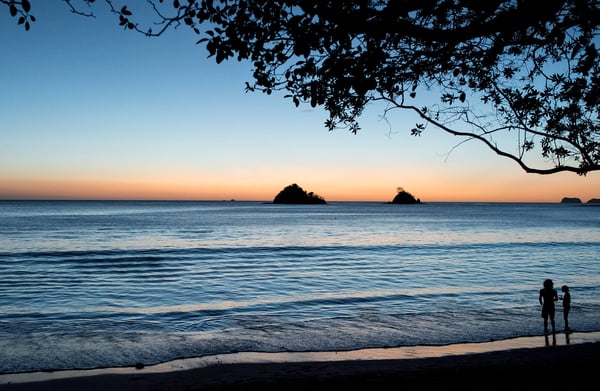
If you’re looking for a place to find some bliss, Costa Rica is a great place to start. After all, Costa Rica is one of the happiest places on earth in numerous rankings, and takes the #1 spot on the Happy Planet Index, a metric that considers wellness, life expectancy, and carbon footprint among other factors.
Costa Rica is a place where the national motto — pura vida — is a way of life, and it's not exclusive to locals. All visitors to Costa Rica are welcome to embrace and take part in this Tico philosophy, to let a portion of their worries go and to prioritize the good life above all else. For travelers looking to get away from the busyness of life this can be a godsend, but there can be an art to pura vida.
So what does a relaxing trip to Costa Rica look like? We've come up with a few examples to get you started when you visit the country:
Costa Rica has two coastlines, each with strikingly beautiful beaches. Both coasts feature sandy beaches, warm water, and lots of sun throughout most of the year, with a few differences. The Pacific coast is known for its lively reef ecosystems and onshore swell, a perfect place for surfers and snorkelers alike, while the Caribbean coast features a true feeling of the tropics, with lush rainforests filled with life lining the coast all of the way up to the beach.
Costa Rica’s Pacific coasts are famous for big surf. Guanacaste surfing towns like Playa Grande and Playa Avellanas near Tamarindo are where expert surfers go to tackle big waves. But a daunting break isn’t something you experience everywhere, and depending on your experience level, may not exactly be the pura vida prescription.
Enter other beaches, like Playa Danta in Guanacaste. This small, tucked-away beach is sheltered from major swell, with moderate waves and clear shallow water excellently suited to body surfing, boogie boarding, or just a splash out in the cove. Make sure to keep an eye out for some excellent snorkeling spots in the area as well, like the reef between Playa Danta and Dantita, or the leeward side of a Punta Penca and the Islotes Pitahayas.
For a local take on a more traditional beach vacation experience, there’s also the Las Catalinas Beach Club, a central gathering spot for local residents and visitors to dine, exercise, enjoy a cocktail, and unwind — complete with ample seating and comfortable lounge chairs. It's just a two minute walk from the beach, and a great way to kick back with a good book after a long lazy lunch.
There is something transformational about breathing clean air among the natural peace of the wild world, something that's often missing from the usual rhythm of life. The opportunity to get out and experience nature is one that provides a change in perspective, a look into a different form of life, and some simple quiet time among the trees.
Fortunately, in most places in Costa Rica you don't need to go far for some time in the mountains or the forests. For example, in Las Catalinas visitors are welcome to explore miles of hiking trails through tropical dry forest, an overlooked part of Costa Rica's natural biodiversity. Within a short walk from villas is the overlook at Punta Guachipelines, a ridgetop trail with a panoramic view of the hills of the Guanacaste coast, the ocean beyond, and the nearby Pitahaya Islands, where local frigate birds and pelicans nest.
One way locals like to elevate their relaxation is through mindfulness practices, which may explain the popularity of yoga across the country.
Known as Costa Rica’s wellness capital, Nosara is home to a number of yoga intensives and retreats taking advantage of the area's natural beauty. Nosara is also home to the Nosara Yoga Institute, a famous yoga instructor training center and retreat location. For those looking to escape the complications of modern life — if only for a week or two — this is a popular choice.
And for those with an appreciation for the art, but no interest in intensive work, just about any location with a view and a nice atmosphere has a good chance of hosting a yoga class, or other fitness. Between lounging on the beach or getting offshore with local excursions, you can try out mat pilates, core work, and HIIT, or take an aerobics class, or unwind in shavasana while looking out at the waves.
Gentle waves and the rich life of an unspoiled natural world make a casual cruise a hard ticket to pass up for your trip to Costa Rica.
One option to blend a casual cruise with some lifelong learning is ConnectOcean’s Mangrove Explorer course, a deep look at one of the most ecologically important environments in Costa Rica. Departing from Las Baulas National Park in a local Artisanal Boat, the tour explores the mangroves from the water, using the maneuverability of the shallow-bottom vessel to explore areas beyond the reach of normal watercraft.
It’s quite a vibrant hotbed of life, and on this trip -- taken on small boats with a private Naturalist guide -- guests will learn about the fascinating and unique challenges of survival in the environment, as well as the creatures that make these ecosystems their home.
For a more social gathering to kick back, relax, and enjoy the gorgeous weather of the Guanacaste Coast, you can also go on a catamaran cruise. These cruises are an excellent way to simply relish time out upon the sea, anchoring in a hidden cove with the chance enjoy the water and explore the coastline from a kayak, paddleboard, or with mask and snorkel. Add in a snack bar and provided drinks, and you’re set for a few hours of equal parts adventure and bliss.
For evening cruises, the major highlight comes at the end, out among the waves watching the sun set on the golden sea in a moment just as memorable the first time as the fiftieth.